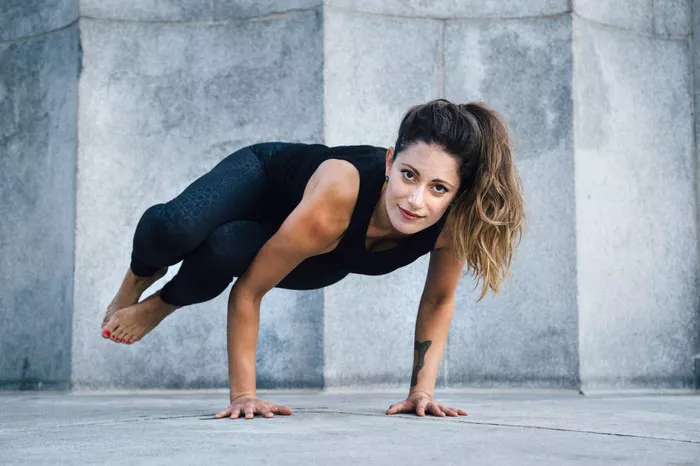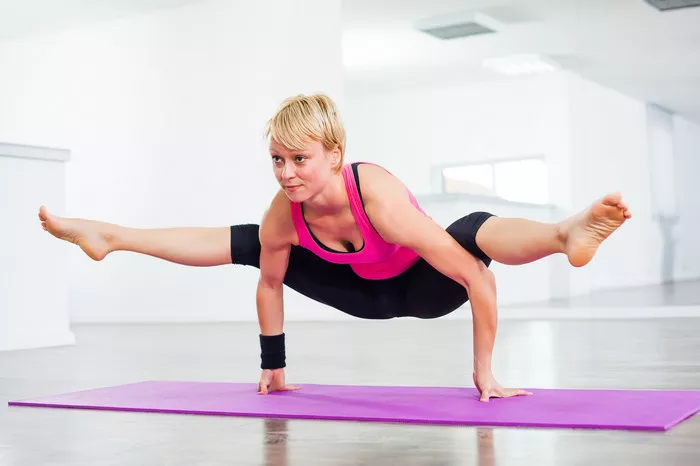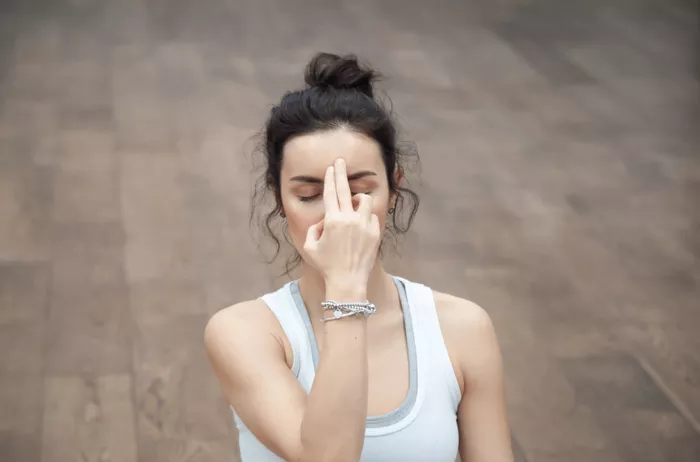The Warrior poses, known in Sanskrit as Virabhadrasanas, are among the foundational asanas (postures) in yoga practice. Named after the mythological warrior Virabhadra, these poses symbolize strength, focus, and determination. While they share a common lineage and purpose, Warrior 1 (Virabhadrasana I) and Warrior 2 (Virabhadrasana II) have distinct alignments, benefits, and energetic expressions. Understanding their differences can enhance your practice, deepen your alignment, and connect you to the deeper principles of yoga.
In this article, we’ll explore the key distinctions between Warrior 1 and Warrior 2, breaking them down into alignment, physical benefits, energetic qualities, common challenges, and tips for practicing each pose effectively. Whether you’re a beginner or a seasoned yogi, this guide will provide insights to elevate your understanding and execution of these powerful asanas.
Overview of Warrior 1 and Warrior 2
Warrior 1 (Virabhadrasana I):
Warrior 1 is a forward-facing posture that emphasizes strength, stability, and the integration of lower-body grounding with upper-body lifting. It represents the focused energy of a warrior charging ahead with purpose.
Primary Focus: Forward-facing alignment, lengthening through the spine, and grounding through the legs.
Energetic Quality: Determination and focus, with an upward and forward-moving energy.
Traditional Symbolism: The act of stepping into battle with clarity and intention.
Warrior 2 (Virabhadrasana II):
Warrior 2 is an open-hip posture that embodies grounded strength and expansive awareness. It represents the readiness and balance of a warrior surveying the battlefield.
Primary Focus: Lateral alignment, opening through the hips, and stability in the lower body.
Energetic Quality: Balance and expansiveness, with a steady outward-moving energy.
Traditional Symbolism: Grounded confidence and preparation.
Key Differences: Alignment and Structure
While both poses strengthen the legs, open the hips, and build endurance, their alignments diverge significantly.
1. Foot and Leg Placement
Warrior 1:
- The front foot points straight ahead, aligned with the front edge of the mat.
- The back foot is turned slightly inward (approximately 45 degrees) to allow for forward-facing hips.
- The stance is narrower than Warrior 2, allowing the hips to square forward.
- Both knees are active, with the front knee bent to approximately 90 degrees and stacked over the ankle, while the back leg remains straight and strong.
Warrior 2:
- The front foot points forward, in line with the long edge of the mat.
- The back foot is turned slightly outward (90 degrees or less), with the heel aligned to the arch of the front foot.
- The stance is wider than Warrior 1 to facilitate open hips.
- The front knee bends to 90 degrees and aligns over the ankle, while the back leg stays straight and rooted.
2. Hip Alignment
Warrior 1: The hips are squared toward the front of the mat, which requires mobility and flexibility in the hip flexors and the pelvis.
Warrior 2: The hips are open to the side, with the pelvis in a more neutral position.
3. Upper Body and Arm Position
Warrior 1: The torso faces forward, and the arms extend overhead, palms either touching or shoulder-width apart. The chest lifts, creating a slight arch in the upper back.
Warrior 2: The torso remains upright but turns to face the side. The arms extend outward in opposite directions, parallel to the ground, with the gaze over the front hand.
4. Energetic Direction
Warrior 1: Energy flows forward and upward, symbolizing focused intention and upward growth.
Warrior 2: Energy radiates outward through the arms and legs, symbolizing stability and readiness.
Physical Benefits
Both Warrior poses build strength, flexibility, and endurance, but their unique alignments emphasize different muscle groups and provide distinct benefits.
Warrior 1 Benefits:
Strengthens the Lower Body:
Engages the quadriceps, hamstrings, glutes, and calves to maintain stability.
Opens the Hip Flexors:
Stretches the hip flexors and psoas on the back leg, which are often tight from prolonged sitting.
Improves Spinal Mobility:
Encourages length and extension through the spine, counteracting the effects of poor posture.
Builds Shoulder and Arm Strength:
Holding the arms overhead activates the deltoids and stretches the chest and shoulders.
Enhances Balance and Focus:
Requires core engagement and mental clarity to sustain alignment.
Warrior 2 Benefits:
Strengthens the Legs and Core:
Develops stability and stamina in the quadriceps, hamstrings, and obliques.
Promotes Hip Mobility:
Opens the inner thighs and groin, enhancing hip flexibility and external rotation.
Improves Postural Awareness:
Encourages alignment of the shoulders, spine, and pelvis.
Enhances Coordination:
Requires simultaneous engagement of the upper and lower body.
Develops Mental Grounding:
The steady, expansive stance fosters a sense of calm and readiness.
Energetic Qualities
The energetic expressions of Warrior 1 and Warrior 2 reflect their differing alignments and symbolism.
Warrior 1: Encourages upward and forward momentum, symbolizing focused effort, goal-setting, and determination. It’s an excellent pose for cultivating motivation and direction.
Warrior 2: Embodies a sense of balance, groundedness, and expansive awareness. It reflects the mental readiness and calm confidence of a warrior who is fully present and prepared.
Common Challenges and Solutions
Challenges in Warrior 1:
Tight Hips:
Difficulty squaring the hips forward due to limited mobility in the hip flexors and pelvis.
Solution: Shorten the stance slightly and focus on gradually increasing flexibility over time.
Arching the Lower Back:
Overarching the lumbar spine instead of lifting through the chest.
Solution: Engage the core to stabilize the pelvis and avoid excessive backbending.
Balance Issues:
Difficulty maintaining stability due to the narrow stance.
Solution: Practice near a wall for support and keep the back foot rooted.
Challenges in Warrior 2:
Collapsing Front Knee:
The front knee may collapse inward, straining the knee joint.
Solution: Actively press the knee outward, aligning it with the middle toe.
Tight Hips:
Limited external rotation in the hips can make it difficult to open fully.
Solution: Take a slightly narrower stance and work on hip-opening stretches.
Tension in the Shoulders:
Shoulders may creep up toward the ears.
Solution: Relax the shoulders and lengthen the arms without overextending.
Tips for Practicing Warrior 1 and Warrior 2
Warrior 1:
Anchor Through the Back Foot:
Press firmly into the outer edge of the back foot to stabilize the pose.
Engage the Core:
Draw the navel toward the spine to support the lower back.
Reach Upward:
Extend through the fingertips while keeping the shoulders relaxed.
Warrior 2:
Ground the Feet:
Distribute weight evenly between the front and back feet.
Open the Hips:
Imagine the inner thighs spiraling open to create space in the pelvis.
Expand Outward:
Stretch the arms in opposite directions to maximize the pose’s energetic expression.
How to Integrate Warrior 1 and Warrior 2 into Your Practice
Warrior 1 and Warrior 2 often appear together in yoga sequences, such as Sun Salutations or standing pose flows. Transitioning between these poses can improve strength, coordination, and body awareness.
Example Sequence:
- Begin in Mountain Pose (Tadasana).
- Step back into Warrior 1, holding the pose for several breaths.
- Transition into Warrior 2 by opening the hips and arms.
- Flow back into Warrior 1 by squaring the hips forward.
- Step forward to return to Mountain Pose.
Practicing both poses together highlights their contrasts and complements their benefits, fostering both stability and mobility.
Conclusion
Warrior 1 and Warrior 2 are more than just physical postures; they embody the strength, focus, and balance of a yogic warrior. While Warrior 1 teaches us to move forward with purpose, Warrior 2 reminds us to remain grounded and aware of the bigger picture.
By understanding the differences in alignment, benefits, and energetic expressions, you can practice these poses with greater intention and effectiveness. Whether you’re building strength, improving flexibility, or cultivating inner awareness, Warrior 1 and Warrior 2 serve as powerful tools to enhance your yoga journey.
Embrace the challenges and rewards of these iconic poses, and let them guide you toward greater physical and mental resilience. After all, the true warrior is one who finds harmony between strength and stillness.
Related Topics:























